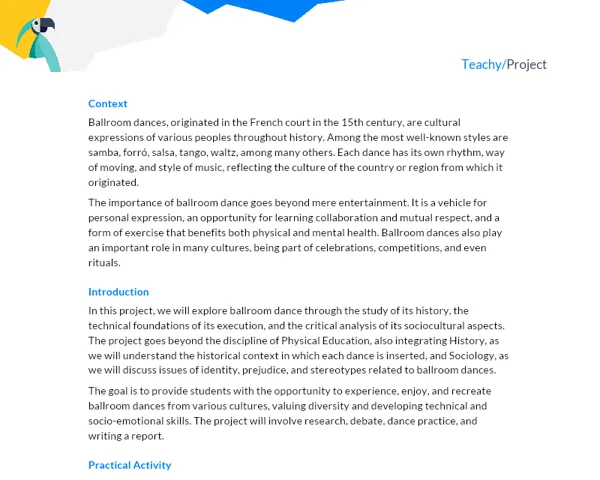Contextualization
Although sports are fundamentally a human activity aimed at physical development and well-being, several problems have arisen with the progressive professionalization and commercialization. Among these problems, we highlight doping, corruption, and the use of drugs to enhance physical performance. These are serious issues, and understanding them is significant not only for those involved in sports but also for society as a whole.
Doping
Doping is the use of prohibited substances that aim to increase the athlete's performance and provide a competitive advantage. This brings with it a series of ethical and health issues. First, doping is unethical because it goes against the spirit of fair play and sportsmanship. Second, many substances used for doping can have serious side effects that harm the athlete.
Corruption
Corruption in sports is a phenomenon that has become increasingly visible. It involves match-fixing, unfair favoritism, and money laundering. This undermines the integrity of sports and harms both athletes and spectators.
Performance-Enhancing Drugs
The use of drugs to enhance performance is similar to doping but not necessarily prohibited. This may involve, for example, the intake of large quantities of dietary supplements or medications for nutritional deficiencies. However, any use of substances to improve performance, if not properly controlled, can have side effects and be harmful.
Meaning and Relevance
Understanding these issues is crucial for a critical and informed view of sports. It is important to remember that sports are, above all, a human activity and, as such, should be conducted ethically and fairly. Furthermore, it is important to know the risks associated with the use of performance-enhancing substances so that we can make informed and safe decisions.
In this sense, this project aims to develop an understanding of the issues of doping, corruption, and the use of performance-enhancing drugs, as well as to promote socio-emotional skills such as time management, communication, problem-solving, creative thinking, and proactivity.
For further study on the topic, we recommend the following sources:
- To better understand doping, check out this article from BBC Brazil.
- To delve deeper into corruption in sports, see this study from Transparency International.
- For more information on performance-enhancing drugs, read this article from the Journal of Physical Education.
Practical Activity
Activity Title: "Doping, Corruption, and Performance-Enhancing Drugs: A Critical Analysis"
Project Objective
To analyze and understand the complexity and impact of doping, corruption, and the use of performance-enhancing drugs in sports, as well as to develop skills in time management, teamwork, communication, problem-solving, critical thinking, and proactivity.
Detailed Project Description
This project will be carried out in groups of 3 to 5 students and will last approximately one month. Students will investigate the history and effects of these issues in sports. As a multidisciplinary project, it should involve knowledge of Physical Education, Biology (for the study of the effects of drugs and doping substances on the human body), and History (for the study of corruption and the evolution of regulations against doping).
Required Materials
- Internet access for research and documentation.
- Books and scientific articles for research.
- Software for writing the final report (Microsoft Word, Google Docs, etc.).
Detailed Step-by-Step for Activity Completion
Step 1: Research and Literature Review (6 hours)
Students should research the three main topics: doping, corruption, and the use of drugs to enhance performance in sports. The research should focus on theoretical concepts, history, known cases, and the consequences of these issues for athletes and sports as an institution and social activity.
Step 2: Group Discussion and Hypothesis Formulation (3 hours)
After becoming familiar with the topics, students should discuss what they have learned in groups, share viewpoints, and formulate hypotheses about the causes and effects of these phenomena.
Step 3: In-Depth Investigation (8 hours)
Based on the hypotheses raised, students should deepen their research, looking for evidence to support or refute their hypotheses.
Step 4: Preparation of the Report (6 hours)
Students should organize their findings and write a scientific research report. The final report should have an Introduction, where the topic will be contextualized and the hypotheses presented; a Development, where the theory, methodology used, and results obtained will be discussed; Conclusions, summarizing the main points, explaining the learnings obtained, and the conclusions about the hypotheses; and the Bibliography used.
Step 5: Presentation of the Work (3 hours)
Groups should prepare a 15-20 minute presentation of their main findings for the class. This presentation should describe the problem studied, the methodology used, the main results, and conclusions of the work.
Project Deliverables
Students must submit the final report and slide presentations. The report should be written clearly, objectively, and structured, coherently presenting the knowledge generated during the project. The presentation should cover the most important points of the work, demonstrating the results of the research conducted and the conclusions reached.



